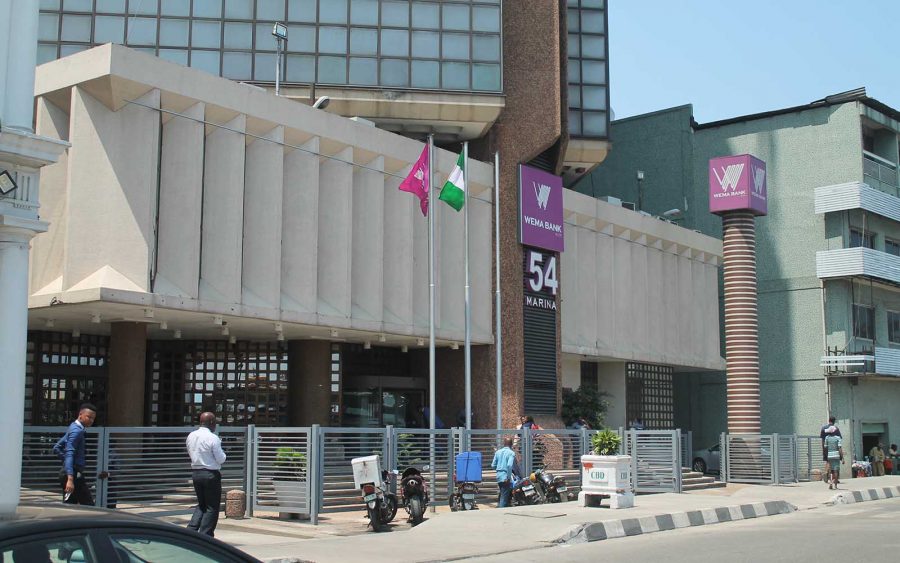Interest and Non-Interest Income Strengthen Margins: Wema Bank Plc achieved 9.59% growth in gross earnings to NGN71.53bn, driven by an uptick in both interest (+8.60%) and non-interest income (+13.93%). Interest expense, however, declined by 8.00% as the bank replaced short term lending from other bilateral funding sources.
Consequently, the bank’s Net Interest Margin (NIM) improved to 7.08%. Impairment charges increased by 61.05% while the uptick in operating expenses pressured profitability. Nevertheless, Profit After Tax (PAT) grew by 47.48% to NGN3.33bn.
Interest expenses are, however, expected to rise in 2019, driven by coupon payments on its recently issued bond, pressuring margins. However, we acknowledge the bank’s drive towards retail deposits, hence we project growths in Interest income (2.35%), non-interest income (8.00%), and PAT (12.84%).
Decline in CASA Mix Undermines Deposit Growth: Customers’ deposits, which make up 75.53% of total assets, grew by 45.09%, strengthening the bank’s asset base. Although the bank grew its term, current and savings deposits, term deposits weighed more, placing
downward pressure on its CASA mix to 48.96%.
Nonetheless, we are confident in the ability of the bank to leverage on its digital banking platform, ALAT, to grow its low-cost deposits and improve its CASA mix to c.55%.
Cost to Income Ratio Remains A Burden: Although operating income grew by 25.50%, the banks CIR just moderated to 87.16% as spending on technology and personnel expenses drove operating expenses by 21.68%.
Going forward, we expect a decline in technology cost as a chunk of its spending in 2018 was one-off. We believe that this decline, coupled with the bank’s proposed electronic onboarding system for customers will lead to a decline in operating expenses and hence, a decline in its Cost-to-income ratio.
Capital Restructuring Strengthens Financial Position: Having raised NGN17 billion in Tier II capital, Wema Bank Plc had the required funds to expand its loan book and investment holdings.

Thus, loans and advances to customers grew by 16.84% while investment securities increased by 61.06%. The bank also restructured its loan portfolio and adopted internal guidance of a maximum of 20% single sector concentration, to avoid concentration risk and a spike in its Non-Performing Loan ratio (4.98%) which is already bordering the regulatory limit.
Other prudential ratios also remained within regulatory bounds: Capital Adequacy ratio (18.01%) and Loan to Deposit (68.31%). Given its capital position, we project a 6% growth in the loan book which is below its guidance of 10% for FY2019.
Also, we expect the NPL which is currently at 4.98% to break the prudential guidance of 5% given the expected growth in risk assets.
Fifteen Years Later, Shareholders Get Rewarded: Following its capital reconstruction, a major constraint to Wema Bank’s dividend payment ability was lifted. Consequently, Wema Bank proposed a dividend NGN0.03, reflecting a payout ratio of 34.79%. If our expectation of an uptick in the NPL ratio holds, its dividend paying ability will be capped at 75%. However, there is no cause for alarm yet, as a payout ratio of 75% is a tall order.

Recommendation: We reviewed our EPS upwards to NGN0.10 from NGN0.08, given our
expectation of stronger profit by FY2019. With an expected PE of 8.30x, we arrived at our Dec. 2019 target price at NGN0.83, posing an upside potential of 15.28%.
Contact Information
Brokerage Services
topeoludimu@meristemng.com (+234 905 569 0627)
abisoyeoludipe@meristemng.com (+234 708 000 7861)
contact@meristemng.com
Investment Banking/Meristem Capital Limited
senamijohnson@meristemng.com (+234 806 011 0856)
seunlijofi@meristemng.com (+234 808 536 5766)

















